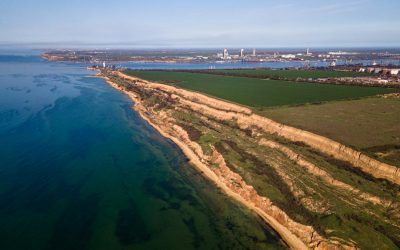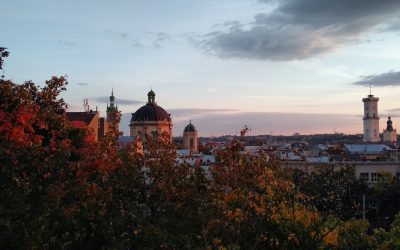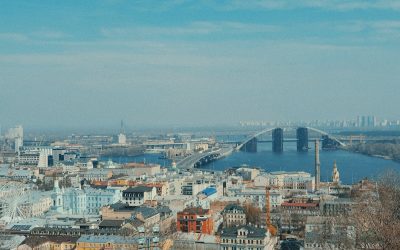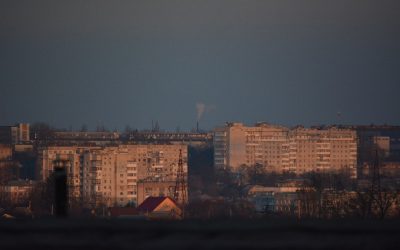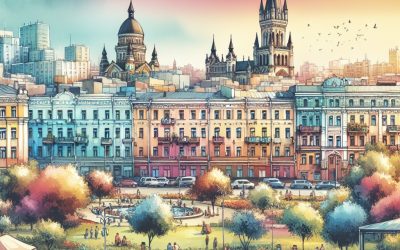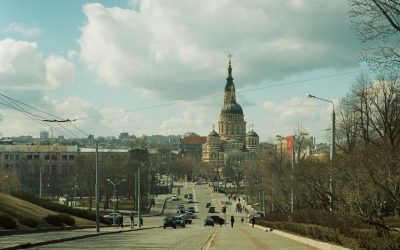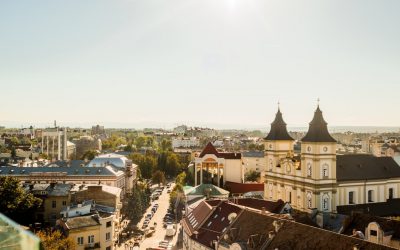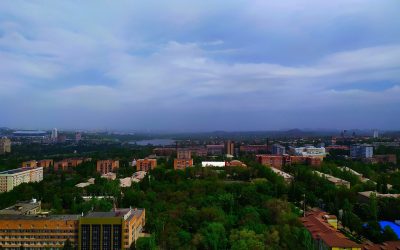World Geography
Geography is the study of the Earth’s landscapes, environments, and the relationships between people and their surroundings. It encompasses both the physical aspects of the Earth, such as its landforms, bodies of water, and climate, as well as the human aspects, including population distribution, cultures, and economies. World geography is a broad field that seeks to understand the complexities of our planet and how humans interact with it. By studying world geography, we can gain a deeper appreciation for the diversity of our planet and the interconnectedness of its various regions.
Geography is a multidisciplinary field that draws on elements of physical science, social science, and humanities. It involves the use of maps, spatial analysis, and geographic information systems (GIS) to understand the Earth’s surface and the processes that shape it. World geography also encompasses the study of human geography, which examines the ways in which people and their activities are distributed across the Earth. By understanding world geography, we can better appreciate the environmental, cultural, and economic challenges facing different regions of the world. This knowledge is crucial for addressing global issues such as climate change, resource management, and international development.
The Five Oceans and Seven Continents
The Earth’s surface is divided into five major oceans: the Pacific, Atlantic, Indian, Southern (or Antarctic), and Arctic Oceans. These vast bodies of water play a crucial role in regulating the Earth’s climate and supporting diverse marine ecosystems. The oceans also serve as important transportation routes and a source of food and other natural resources for human societies around the world.
In addition to the oceans, the Earth’s landmasses are divided into seven continents: Africa, Antarctica, Asia, Europe, North America, Australia (or Oceania), and South America. Each continent has its own unique physical and cultural characteristics, shaped by millions of years of geological processes and human history. From the deserts of Africa to the rainforests of South America, the continents offer a rich tapestry of landscapes and environments for exploration and study.
Major Mountain Ranges and Deserts
The Earth’s surface is also marked by major mountain ranges and deserts that have shaped the planet’s physical and cultural landscapes. The Himalayas, for example, are the highest mountain range in the world and are home to diverse ecosystems and cultures in countries such as India, Nepal, and Bhutan. The Andes in South America, the Rockies in North America, and the Alps in Europe are other prominent mountain ranges that have influenced human settlement patterns and economic activities.
Deserts cover about one-third of the Earth’s land surface and are characterized by low precipitation and extreme temperatures. The Sahara Desert in Africa is the largest hot desert in the world, while the Gobi Desert in Asia is one of the largest cold deserts. Deserts are not only home to unique flora and fauna but have also been important trade routes and cultural crossroads throughout history.
Climate Zones and Biomes
The Earth’s climate is influenced by a variety of factors, including latitude, altitude, ocean currents, and prevailing winds. As a result, the planet is divided into different climate zones, each with its own characteristic weather patterns and ecosystems. The equator, for example, experiences a tropical climate with high temperatures and heavy rainfall, while the polar regions have a cold and dry climate.
These climate zones give rise to different biomes, or large ecological areas characterized by distinct plant and animal communities. The tropical rainforest biome, found near the equator, is home to a diverse array of species and is vital for regulating the Earth’s climate. The grasslands biome, found in regions such as the African savannah and North American prairies, supports grazing animals and has been important for human agriculture throughout history.
Human Geography and Population Distribution
Human geography examines the ways in which people and their activities are distributed across the Earth’s surface. It encompasses topics such as population growth, migration patterns, urbanization, and cultural diversity. Understanding human geography is crucial for addressing global challenges such as poverty, inequality, and environmental degradation.
Population distribution is uneven across the world, with some regions experiencing rapid population growth while others are declining. The majority of the world’s population lives in Asia, particularly in countries such as China and India. Urban areas are also growing rapidly, with more than half of the world’s population now living in cities. This trend has significant implications for infrastructure development, resource management, and social inequality.
Historical and Cultural Geography
Historical geography examines how human activities have shaped the Earth’s landscapes over time. It explores topics such as colonialism, trade routes, and the rise and fall of empires. Cultural geography focuses on how human cultures have developed in different regions of the world and how they interact with their environments.
The Silk Road, for example, was an ancient trade route that connected China with Europe and facilitated the exchange of goods, ideas, and technologies across Eurasia. This historical trade route had a profound impact on the development of cultures and economies along its path. Similarly, cultural geographers study how different societies have adapted to their environments through practices such as agriculture, architecture, and religious beliefs.
The Importance of Geographic Knowledge
Geographic knowledge is crucial for addressing global challenges such as climate change, resource management, and international development. By understanding world geography, we can better appreciate the environmental, cultural, and economic challenges facing different regions of the world. This knowledge is crucial for addressing global issues such as climate change, resource management, and international development.
Geographic knowledge also helps us to understand our interconnectedness with other regions of the world. By studying world geography, we can gain a deeper appreciation for the diversity of our planet and the interconnectedness of its various regions. This understanding can foster a sense of global citizenship and empathy for people from different cultures and backgrounds.
In conclusion, world geography is a complex and multifaceted field that encompasses both physical and human aspects of the Earth’s landscapes. By studying world geography, we can gain a deeper appreciation for the diversity of our planet and the interconnectedness of its various regions. This knowledge is crucial for addressing global challenges such as climate change, resource management, and international development. It also helps us to understand our interconnectedness with other regions of the world and fosters a sense of global citizenship.
FAQs
What is world geography?
World geography is the study of the Earth’s landscapes, environments, and the relationships between people and their environments. It encompasses the physical features of the Earth, as well as the human activity that takes place on it.
Why is world geography important?
World geography is important because it helps us understand the world around us. It provides insights into the physical and human processes that shape our planet, and helps us make informed decisions about how to interact with our environment.
What are the main branches of world geography?
The main branches of world geography include physical geography, which focuses on the Earth’s natural features and processes, and human geography, which examines the relationships between people and their environments.
How does world geography impact our daily lives?
World geography impacts our daily lives in numerous ways, from influencing the weather and climate we experience, to shaping the availability of natural resources and influencing the distribution of populations and cultures around the world.
What are some key concepts in world geography?
Key concepts in world geography include location, place, human-environment interaction, movement, and region. These concepts help geographers understand and interpret the world around them.
A Historic Journey Through Poltava: Exploring the Rich Cultural Heritage of Ukraine’s Hidden Gem
Poltava, a hidden gem in Ukraine’s cultural landscape, is a city that often goes unnoticed by tourists. However, this lesser-known destination is brimming with rich history, architectural heritage, cultural treasures, and natural wonders. In this blog post, we aim to shed light on the beauty and significance of Poltava, encouraging travellers to explore off the beaten path and support local communities. By delving into Poltava’s past, experiencing its vibrant present, and preserving its heritage for future generations, we can truly appreciate the value of this remarkable city. Summary Poltava is a hidden gem in Ukraine’s cultural landscape. The city has a rich history that can be traced through its landmarks and architecture. Poltava has a variety of museums and galleries to explore. Visitors can sample traditional cuisine and experience the city’s music and arts scene. Poltava’s festivals and traditions offer a vibrant celebration of local culture. Discovering Poltava’s Rich History Poltava’s history dates back to ancient times, with evidence of human settlement in the area as early as the 9th century. Over the centuries, the city has witnessed significant events and been home to influential figures. One of the most notable events in Poltava’s history is the Battle of Poltava in 1709, where Peter the Great’s Russian forces defeated Charles XII of Sweden’s army. This battle marked a turning point in European history and solidified Russia’s position as a major power. Understanding Poltava’s past is crucial in appreciating its present. By exploring the city’s historical sites and museums, visitors can gain insight into the events that shaped Poltava and Ukraine as a whole. From ancient ruins to grand palaces,...
Exploring the Charms of Odesa: A Journey Through Ukraine’s Coastal Gem
Located on the Black Sea coast in southern Ukraine, Odesa is a hidden gem waiting to be discovered. With its rich history, stunning architecture, vibrant culture, and picturesque beaches, Odesa offers a unique and unforgettable experience for visitors. Whether you’re a history buff, a lover of art and culture, or simply seeking a relaxing beach getaway, Odesa has something for everyone. Odesa has a fascinating history that dates back to the late 18th century when it was founded as a Russian naval fortress. Over the years, it grew into a major port city and became an important cultural and economic center in the region. Odesa’s strategic location on the Black Sea made it a hub for trade and commerce, attracting merchants and settlers from all over Europe. Today, the city still retains its cosmopolitan charm and is known for its diverse population and vibrant cultural scene. Summary Odesa is a hidden coastal gem in Ukraine worth exploring The city has a rich history and cultural heritage, with numerous museums and art galleries to visit Odesa’s architecture is a wonder to behold, with stunning buildings and landmarks to discover The local cuisine and bustling markets are a must-try for foodies and shoppers alike Odesa’s beaches and seaside promenades offer picturesque views and relaxation opportunities Discovering the Rich History of Odesa Odesa played a significant role in Ukraine’s history, particularly during the 19th century when it was part of the Russian Empire. The city was known as the “Pearl of the Black Sea” and became a melting pot of different cultures and nationalities. Odesa’s historic center is a UNESCO World Heritage...
Exploring the Hidden Gems of Mykolayiv: A Journey Through Ukraine’s Charming Southern City
Mykolayiv, located in southern Ukraine, is a city with a rich history and cultural heritage. Founded in 1789, the city was named after Saint Nicholas, the patron saint of sailors. Throughout its history, Mykolayiv has played a significant role in Ukraine’s maritime industry and has been an important center for shipbuilding and trade. Today, Mykolayiv is a vibrant city that offers visitors a unique blend of historical landmarks, cultural attractions, and natural beauty. From its charming neighborhoods to its architectural marvels, there is something for everyone to explore and discover in this southern Ukrainian gem. Summary Mykolayiv is a southern Ukrainian city with a rich history. The city’s quaint neighbourhoods are home to hidden gems waiting to be uncovered. Mykolayiv’s historic buildings and landmarks are architectural marvels worth exploring. The city’s cultural scene boasts museums, galleries, and theatres that are worth a visit. Mykolayiv’s parks, gardens, and waterfronts offer natural wonders waiting to be discovered. Uncovering Mykolayiv’s Hidden Gems: A Journey Through the City’s Quaint Neighborhoods While Mykolayiv may not be as well-known as other Ukrainian cities like Kyiv or Lviv, it is home to several hidden gems that are worth exploring. One such neighborhood is the Old Town, which is filled with narrow cobblestone streets, colorful buildings, and quaint cafes. Here, visitors can wander through the winding streets and soak up the atmosphere of this historic part of the city. Another neighborhood worth visiting is Sovetskaya Street, which is known for its unique shops, cafes, and street art. This vibrant street is lined with boutique stores selling locally-made crafts and clothing, as well as trendy cafes where visitors...
Discovering the Charm of L’viv: A Journey Through Ukraine’s Cultural Capital
L’viv, located in western Ukraine, is a city that is rich in history, culture, and architectural beauty. Known as the cultural capital of Ukraine, L’viv is a vibrant and lively city that offers visitors a unique and immersive experience. With its charming cobblestone streets, stunning architecture, and thriving arts scene, L’viv has become a popular destination for tourists from all over the world. L’viv holds great importance in Ukrainian culture, as it is considered the birthplace of Ukrainian national identity. The city has played a significant role in the country’s history and has been a center for intellectual and artistic pursuits. L’viv is known for its strong sense of community and pride in its cultural heritage. From its numerous museums and galleries to its lively festivals and events, L’viv offers visitors a chance to immerse themselves in Ukrainian culture and history. Summary L’viv is the cultural capital of Ukraine, known for its rich history and artistic heritage. The city’s architecture is a marvel, showcasing a glimpse into its past. L’viv is a food lover’s paradise, with a vibrant nightlife that never sleeps. The city hosts numerous festivals and events, celebrating life and its traditions. L’viv is a welcoming city, known for its warm hospitality and local customs. The Historical Significance of L’viv: A Journey Through Time L’viv has a rich and diverse history that spans over several centuries. The city was founded in the 13th century by King Daniel of Galicia and quickly became an important center of trade and commerce. Throughout its history, L’viv has been influenced by various cultures and empires, including Polish, Austrian, and Soviet rule....
Exploring the Hidden Gems of Luhans’k: A Journey Through Eastern Ukraine
Luhans’k, located in eastern Ukraine, is a city that is often overlooked by tourists. However, this hidden gem is filled with surprises and is definitely worth a visit. With its rich history, stunning natural landscapes, unique local cuisine, vibrant art and culture scene, and warm hospitality, Luhans’k has something to offer for every type of traveler. Summary Luhans’k is a city full of surprises, with a rich history and unique local cuisine. The city boasts stunning natural landscapes and a vibrant art and culture scene. Hidden gems can be found throughout Luhans’k, including religious sites and lesser-known attractions. Festivals and celebrations in Luhans’k are a colourful and exciting experience. Outdoor activities and sports are plentiful, and visitors can expect warm hospitality and a rich cultural experience. Discovering the Rich History of Luhans’k: From Ancient Times to Modern Day Luhans’k has a fascinating history that dates back to ancient times. The city has been inhabited since the 5th century BC and has seen the rise and fall of various civilizations. From the Scythians to the Slavs, Luhans’k has been influenced by different cultures throughout the centuries. One of the must-visit historical landmarks in Luhans’k is the Luhansk Regional Museum. This museum showcases the history and culture of the region through its extensive collection of artifacts and exhibits. Another notable site is the Luhansk Taras Shevchenko National University, which was founded in 1921 and is one of the oldest universities in Ukraine. A Culinary Adventure: Exploring Luhans’k’s Unique Local Cuisine Luhans’k’s cuisine is a delightful blend of Ukrainian, Russian, and Eastern European flavors. The city is known for its hearty and...
Discovering the Charm of Kyiv: A British Perspective
Kyiv, the capital city of Ukraine, may not be the first destination that comes to mind for British travelers, but it is a hidden gem waiting to be discovered. With its rich history, vibrant culture, and warm hospitality, Kyiv offers a unique and unforgettable experience for visitors. As a British traveler who has had the pleasure of exploring this beautiful city, I can attest to its charm and allure. Summary Kyiv has a rich history and culture that is worth exploring. The architecture of Kyiv is impressive and can be appreciated from a British perspective. Ukrainian cuisine is a delicious surprise that should not be missed. Kyiv’s vibrant nightlife scene offers a unique experience for visitors. The people of Kyiv are warm and welcoming, making it a must-visit destination for Brits. Exploring Kyiv’s Rich History and Culture Kyiv is a city steeped in history, with a heritage that dates back over a thousand years. From the iconic Saint Sophia Cathedral to the majestic Kyiv Pechersk Lavra, there are numerous landmarks that showcase the city’s historical significance. These architectural marvels are not only visually stunning but also provide a glimpse into the past and the cultural heritage of Ukraine. In addition to its historical landmarks, Kyiv is home to a plethora of museums and galleries that showcase Ukrainian culture. The National Museum of Ukrainian History and the National Art Museum of Ukraine are just a few examples of the institutions that offer a deeper understanding of the country’s art, history, and traditions. From ancient artifacts to contemporary art exhibitions, these cultural institutions provide a comprehensive overview of Ukrainian culture. Furthermore,...
Discovering the Hidden Gems of Kirovohrad: A Journey Through Ukraine’s Charming City
Nestled in the heart of Ukraine, Kirovohrad is a lesser-known destination that offers a wealth of hidden charms waiting to be discovered. While it may not be as famous as cities like Kyiv or Lviv, Kirovohrad has its own unique attractions and experiences that make it a worthwhile destination for travellers seeking something off the beaten path. Summary Kirovohrad is a hidden gem with rich history, stunning architecture, and delicious cuisine. The city boasts impressive landmarks, including the Cathedral of St. John the Baptist and the Old Castle. Local cuisine is a must-try, with dishes like borscht and varenyky. Kirovohrad’s natural scenery is breathtaking, with parks, lakes, and forests to explore. The city’s arts scene is vibrant, with galleries and museums showcasing local talent. History and Culture: Uncovering the Rich Heritage of Kirovohrad Kirovohrad has a rich history that dates back to its founding in 1754. Originally known as Yelisavetgrad, the city was named after Empress Elizabeth of Russia. Over the years, it has undergone several name changes, finally settling on Kirovohrad in 1939 in honor of Soviet leader Sergey Kirov. To truly appreciate the city’s history, a visit to its museums and cultural institutions is a must. The Kropyvnytskyi Regional Museum is a great place to start, offering a comprehensive look at the region’s history through its extensive collection of artifacts and exhibits. The museum also hosts regular events and workshops that provide visitors with a deeper understanding of the local culture. Architecture and Landmarks: Discovering the City’s Most Striking Buildings Kirovohrad is home to a variety of architectural gems that showcase its rich history and cultural heritage....
Exploring the Hidden Gems of Khmelnytskyi (Khmel’nyts’kyy): A Journey Through Ukraine’s Historic City
Khmelnytskyi is a city located in western Ukraine, in the historic region of Podolia. It is the administrative center of the Khmelnytskyi Oblast and has a population of over 250,000 people. The city has a rich history that dates back to ancient times, with evidence of human settlement in the area as early as the 9th century. Throughout its history, Khmelnytskyi has been influenced by various cultures and empires, including the Polish-Lithuanian Commonwealth, the Ottoman Empire, and the Russian Empire. Khmel’nyts’kyy is known for its significant role in Ukrainian culture. The city is named after Bohdan Khmelnytsky, a prominent figure in Ukrainian history who led an uprising against Polish rule in the 17th century. Khmelnytsky’s rebellion marked a turning point in Ukrainian history and is considered a symbol of national liberation. Today, Khmel’nyts’kyy is proud of its heritage and celebrates its cultural identity through various festivals, events, and traditions. Summary Khmel’nyts’kyy is a city with a rich history and culture, making it a great destination for travellers. The city is home to many architectural marvels, including landmarks like the Cathedral of the Holy Trinity and the Potocki Palace. Visitors can also explore the city’s artistic heritage by visiting museums and galleries like the Khmel’nyts’kyy Regional Museum and the Art Gallery of the City. Foodies will love the local food scene, with a variety of eateries serving up traditional Ukrainian dishes like borscht and varenyky. The city is also known for its festive spirit, with seasonal celebrations like the Khmel’nyts’kyy City Day and the Christmas Market. Discovering the Architectural Marvels of Khmel’nyts’kyy: A Tour of the City’s Landmarks One...
Discovering the Charms of Kherson: A Journey Through Southern Ukraine
Kherson is a city located in southern Ukraine, situated on the banks of the Dnieper River. With a population of around 300,000 people, it is often overlooked by tourists in favor of more well-known destinations in Ukraine. However, Kherson is a hidden gem that offers a unique and authentic Ukrainian experience. When visiting Kherson, you can expect to find a city that is rich in history, culture, and natural beauty. From its historical landmarks and architectural wonders to its vibrant nightlife and delicious cuisine, Kherson has something to offer every type of traveler. Summary Kherson is a hidden gem in southern Ukraine, offering a unique blend of history, culture, and natural beauty. The city has a rich historical significance, with roots tracing back to the 18th century and the founding of the Russian Empire. From ancient to modern times, Kherson boasts a diverse range of architectural wonders, including stunning cathedrals, palaces, and museums. Kherson’s parks and gardens are a must-see for nature lovers, with picturesque landscapes and scenic views. The city’s vibrant culture is on full display through its festivals, music, art, and gastronomic delights, offering a truly immersive experience for visitors. The Historical Significance of Kherson: Tracing the City’s Roots Kherson was founded in 1778 by Grigory Potemkin, a Russian military leader and statesman. The city was strategically located at the mouth of the Dnieper River and served as an important naval base for the Russian Empire. It played a significant role in Ukraine’s history, particularly during the Russian Civil War and World War Today, visitors to Kherson can explore its historical landmarks and monuments that tell the...
Exploring the Hidden Gems of Kharkiv: A Journey Through Ukraine’s Second Largest City
Kharkiv, located in northeastern Ukraine, is the country’s second largest city and serves as a major cultural and economic center. With a population of over 1.4 million people, it is a bustling metropolis that offers a unique blend of history, architecture, art, and outdoor spaces. The city is situated in the Kharkiv Oblast region and is known for its strategic location near the Russian border. It has historically been an important transportation hub, connecting Ukraine with Russia and other European countries. Kharkiv is also home to several universities and research institutions, making it a center for education and innovation. Summary Kharkiv is Ukraine’s second largest city, with a rich history and vibrant culture. The city boasts impressive architectural marvels, including buildings and monuments from various eras. Kharkiv has a thriving arts scene and a rich cultural heritage, with plenty of opportunities to explore both. Food and drink in Kharkiv are a must-try, with local cuisine and top-rated restaurants and bars. The city also offers beautiful parks and gardens, great shopping, sports facilities, and day trips to nearby towns and villages. The History of Kharkiv: Tracing the City’s Roots from Ancient Times to the Present Day Kharkiv has a rich history that dates back to ancient times. The area was first settled by Slavic tribes in the 2nd century AD and later became part of the Kievan Rus’ state. In the 17th century, Kharkiv became an important trading center and was granted city status by the Russian Empire. During the 19th century, Kharkiv experienced rapid industrialization and became a major center for manufacturing and trade. It was also a hub...
Discovering the Hidden Gems of Ivano-Frankivs’k: A Journey Through Ukraine’s Charming City
Nestled in the western part of Ukraine, Ivano-Frankivs’k is a hidden gem waiting to be discovered. With its rich history, vibrant culture, and stunning architecture, this city offers a unique and authentic Ukrainian experience. Originally founded in the 17th century as a fortress, Ivano-Frankivs’k has since grown into a bustling city with a population of over 200,000 people. One of the reasons why Ivano-Frankivs’k is worth visiting is its strategic location. Situated at the foothills of the Carpathian Mountains, the city serves as a gateway to the beautiful landscapes and outdoor activities that the region has to offer. Additionally, Ivano-Frankivs’k is well-connected to other major cities in Ukraine, making it easily accessible for both domestic and international travellers. Summary Ivano-Frankivs’k is a hidden gem in Ukraine with a rich history and culture. Exploring the old town is a must-do activity, with its historic centre and iconic buildings. Local cuisine is a highlight, with must-try dishes like banosh and varenyky. The city’s art scene is also worth exploring, with galleries and museums showcasing local talent. Nature escapes are plentiful, with parks and gardens offering a peaceful respite from the city. The Rich History and Culture of Ivano-Frankivs’k Ivano-Frankivs’k has a fascinating history that dates back centuries. Originally known as Stanisławów, the city was named after its founder, Polish nobleman Stanisław Potocki. Throughout its history, Ivano-Frankivs’k has been influenced by various cultures and empires, including Polish, Austrian, and Soviet. This diverse heritage is reflected in the city’s architecture, traditions, and cuisine. The cultural influences in Ivano-Frankivs’k can be seen through its vibrant traditions and festivals. The city is known for its...
Exploring the Hidden Gems of Donetsk (Donets’k): A Journey Through Ukraine’s Industrial Heartland
Welcome to Donetsk, a city in eastern Ukraine that is often overlooked by travellers. In this blog post, we will uncover the hidden charms of Donets’k and why it is worth visiting. From its rich history to its vibrant cultural scene, Donets’k has something to offer every type of traveller. Whether you are interested in exploring the city’s industrial past, immersing yourself in its cultural offerings, or simply enjoying its natural beauty, Donets’k has it all. Summary Donets’k is a hidden gem in Ukraine with rich history and culture to explore. The city was once the industrial heartland of Ukraine and has since transformed into a hub for arts and nature. Visitors can enjoy museums, art galleries, theatres, nature reserves, parks, and gardens in Donets’k. Donets’k’s cuisine is a must-try, with local markets and high-end boutiques offering a variety of options. Travellers can discover hidden gems off the beaten path and easily navigate the city with various transportation options. The Industrial Heartland of Ukraine: A Brief Overview Donets’k has a long history as an industrial city and is often referred to as the “industrial heartland” of Ukraine. The city’s industrial development began in the late 19th century with the discovery of coal and the establishment of coal mines. This led to the rapid growth of Donets’k as a major industrial center, attracting workers from all over Ukraine and beyond. The impact of industry on the city’s development cannot be overstated. Donets’k became a hub for coal mining, steel production, and heavy machinery manufacturing. The city’s skyline was dominated by smokestacks and factories, creating a unique industrial landscape that...

